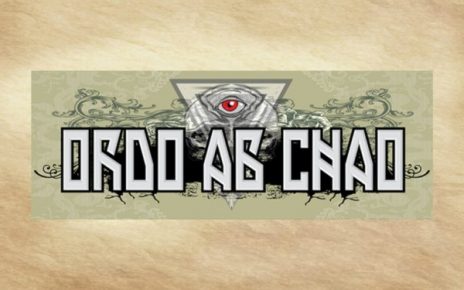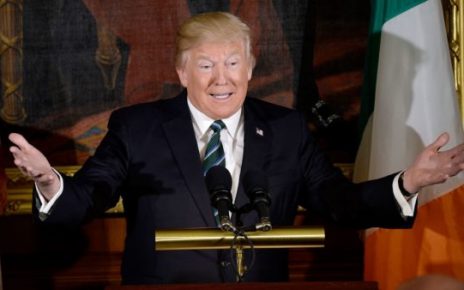Recent viral reports claim the United States and Saudi Arabia have ended their long-standing petrodollar agreement. Are these claims based in fact? And what do recent agreements between the Saudi Kingdom and China mean for the U.S. dollar?
On June 9th, 2024, a 50-year old agreement between the United States government and the Saudi kingdom expired, sparking viral claims about the end of the “petrodollar” and U.S. dollar dominance. The news has resulted in hundreds of blogs, articles, and news reports discussing the potential implications for the relationships between the two nations. This scrutiny comes right as a newly released 9/11 tape appears to show the Saudi’s aware of plans to attack the U.S. at least two years before the September 11th attacks.
However, on closer examination, the petrodollar situation is more nuanced, with the U.S. and Saudi Arabia continuing to partner while the Saudis prepare for new arrangements with China.
What Is The Petrodollar?
The term petrodollar is often used in several different ways, all of which relate to the U.S. dollar being the world’s dominant reserve currency. Most often, the petrodollar is mentioned in reference to oil being bought and sold using the USD.
The petrodollar also refers to agreements established between the U.S. and the (OPEC) during the 1970’s.The U.S. convinced the OPEC nations to invest their petrodollars into western nations. Specifically, the U.S. convinced the Saudis to purchase billions of dollars in US debt in exchange for U.S. military equipment. In 2016, Bloomberg reported on the arrangement:
“The basic framework was strikingly simple. The U.S. would buy oil from Saudi Arabia and provide the kingdom military aid and equipment. In return, the Saudis would plow billions of their petrodollar revenue back into Treasuries and finance America’s spending.”
This arrangement has been the standard between the two governments for the last 50 years. The changing of this agreement would have drastic implications, and this is why reports claiming the end of the petrodollar went viral.
Is The Petrodollar Over?
India Today reported “Saudi Arabia ends 50-year petrodollar deal with US for multi-currency sales”, while The Federalist declared “The End Of The Petrodollar Is The End Of America’s Global Dominance”, and The Street claimed, “After 50 Years Death of the Petrodollar Signals End of U.S. Hegemony”. Even The Atlantic Council — often a mouthpiece for the Western Military Industrial Complex — jumped on the hype with a piece titled “What the end of petrodollars means”.
Unfortunately, it appears media outlets and internet pundits jumped the gun in their reporting. India Today corrected itself with the report, “Did Saudi Arabia really end petrodollar deal?”, referencing a blog post from Paul Donovan, the chief economist at UBS Global Wealth Management. In that post, titled “The dangers of confirming your beliefs”, Donovan says the viral claims are the latest example of “confirmation bias”.
Donovan acknowledges that the US and Saudi Arabia did establish a Joint Commission for economic cooperation in June 1974, including the aforementioned agreement for the Saudis to invest oil dollars in US Treasuries. Donovan also notes that oil has always traded in non-dollar currencies between nations around the world. Nations who allow their oil to be purchased in currencies other than US dollars include Venezuela and Iran.
“In January 2023, Saudi indicated it was happy to negotiate oil sales in other currencies. The possibility changes little for financial markets,” Donovan wrote.
He also warned that the viral stories may have originated from speculators in the cryptocurrency community who “desperately want to believe in the dollar’s demise”.
Donovan is not the only one attempting to stem the tide of actual fake news. The Economic Times also ran a piece titled “Petrodollar, it’s alive & flowing”. Even the corporate “fact checkers” at Politifact were surprisingly correct in their analysis that the claims of the death of the petrodollar are false.
Politifact spoke with David Wight, a visiting assistant history professor at the University of North Carolina at Greensboro, and author of Oil Money: Middle East Petrodollars and the Transformation of US Empire, 1967-1988.
“There was no formal agreement between the U.S. and Saudi governments that Saudi oil was contractually required to be sold in U.S. dollars,” Wight said.
One of the original sources for the claim of the end of the petrodollar appears to be the TipRanks financial advice blog hosted on Nasdaq.com In an June 11th post titled “U.S.-Saudi Petrodollar Pact Ends after 50 Years“, Paul Hoffman wrote, “The agreement between the U.S. and Saudi Arabia expired on June 9, 2024. This expiration has far-reaching implications, as it has the potential to disrupt the global financial order.”
The post has since been deleted and TipRanks ran a new piece offering a slight correction. In his update,”The Truth About the Petrodollar Pact“, Hoffman notes that the viral claims stem from his original report but does not admit he made an error.
“The flood of articles and social media posts claiming a longstanding “Petrodollar Pact” between the U.S. and Saudi Arabia expired on June 9 (after 50 years) have unintentionally steered readers wrong,” Hoffman writes. Although he mentions his previous blog, he takes no responsibility for his role in “steering” readers wrong.
He correctly notes that “upon closer examination, it becomes clear that the “pact” never existed in the way the dozens of reports described it”. Hoffman also references the piece from UBS Global Wealth Management.
Despite the claims of the end of the petrodollar and a strained relationship between the U.S. and Saudi Arabia, their relationship appears to be holding strong. In fact, evidence of a strong relationship between the U.S. and Saudi Arabia can be seen in their ongoing negotiations on a defensive trade pact relating to Israeli-Palestinian relations.
However, despite the less than accurate reporting and social media claims, Saudi Arabia has recently announced a new economic partnership which could have massive implications for U.S. dollar hegemony.
Saudi Arabia, China, And The Bank of International Settlements
Even though reports of the end of the petrodollar appear to be misunderstood at best, and outright fabrications at worst, Saudi Arabia is absolutely making economic moves which favor nations directly competing with the U.S., especially China.
In early June Reuters reported that Saudi Arabia joined a “China-dominated central bank digital currency cross-border trial”. Reuters noted that this move was “another step towards less of the world’s oil trade being done in U.S. dollars.”
The announcement means that Saudi Arabia’s central bank will become a “full participant” of Project mBridge, a collaboration between the central banks of China, Hong Kong, Thailand, and the United Arab Emirates focused on the development of cross-border payments using Central Bank Digital Currencies (CBDCs).
Josh Lipsky, who runs a global CBDC tracker at the Atlantic Council, told Reuters the mBridge project is the “most advanced cross-border CBDC project”.
The addition of Saudi Arabia to the mBridge project was announced by the infamous Bank for International Settlement (BIS) who oversees the program. The BIS is a powerful institution which was created in Basel, Switzerland and is seen as the central bank of central banks. The BIS was originally created to process the World War 1 reparations from Germany. The BIS also helped provide liquidity to European governments during economic instability.
In the book The Tower of Basel: The Shadowy History of the Secret Bank that Runs the World, British journalist Adam LeBor outlines the history of corruption and scandal at heart of the BIS. LeBor details how the BIS had countries assign their gold reserves to BIS accounts. The BIS would also process payments between countries. This made the BIS an ATM for many nations, including Hitler’s Germany duing World War 2. LeBor outlines how the BIS helped process payments for Hitler which allowed the Third Reich to flourish and finance its war effort. LeBor also examines the collaboration between Swiss bankers and Nazis in his previous book, Hitler’s Secret Bankers.
The collaboration between the Saudi Kingdom, China, and the BIS should cause concern for opponents of CBDC’s who worry about the potential for governments to track, trace, and block digital transactions. Especially because of recent statements made by Augustin Carstens, General Manager of the Bank for International Settlements.
In a 2020 talk titled “Cross Border Payment: A Vision for the Future”, Carstens offered a peak behind the curtain, detailing exactly how the bankers see CBDC being used:
“We don’t know who’s using a $100 bill today and we don’t know who’s using a 1,000 peso bill today. The key difference with the CBDC is the central bank will have absolute control on the rules and regulations that will determine the use of that expression of central bank liability, and also we will have the technology to enforce that.”
If Carstens and the BIS want to be able to “control” how people use money, we should remain skeptical of the collaboration between authoritarian nations like China and Saudi Arabia.
Although The Atlantic Council report on the “end of the petrodollar” does not seem to be fully accurate, they correctly outline the growing relationship between Saudi Arabia, China, and the rest of the so-called BRICS nations (Brazil, Russia, India, China, and South Africa, respectively).
The Atlantic Council notes that China is now Saudi Arabia’s largest oil customer. The choice to expand relationships with non-U.S. aligned nations is part of a “larger strategy to expand the focus of its international relations beyond the US and Europe”. Saudi Arabia has made its intentions to join BRICS known and the mBridge partnership is just the latest example of that effort.
Interestingly, despite all the talk of moving away from the U.S. hegemony and western influence, the Saudi Kingdom is perfectly aligned with the United Nations and the Agenda 2030 goals. It was recently reported by ambitious Vision 2030 initiative”. It seems that regardless of the talk of breaking away from the U.S. dollar, most of the world’s nations are united behind the Agenda 2030 and Great Reset vision.
What exactly the mBridge pilot project and Rothschild expansion into Saudi Arabia will mean for the U.S. dollar in the immediate future remains to be seen. We should keep an eye on the BRICS gathering in Moscow in October to look for developments relating to Saudi Arabia and the U.S. dollar.
In the mean time, don’t believe the hype on the internet. The dollar is not dead. Yet.




